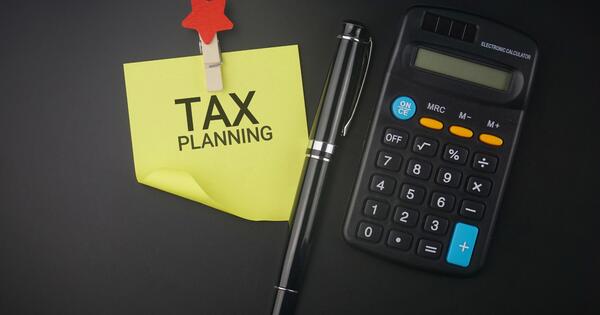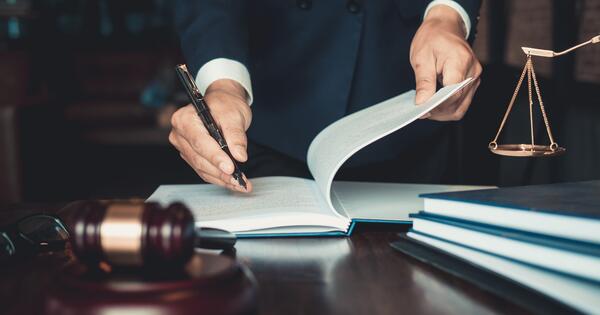On March 27 the CARES Act was signed into law, which brought about a number of tax law changes that benefit taxpayers even back to the 2018 tax year.
As with most major law changes, questions abound as to how the law should be implemented and what procedures should be followed to claim the tax benefits. The IRS has begun issuing guidance that answers a number of questions, with additional guidance expected soon.
The guidance issued last week provides clarification and procedural steps for taxpayers to follow to obtain the tax benefits made available by the CARES Act and by Treasury’s decision to postpone many upcoming deadlines. A common theme in the guidance is a desire by the government to get cash to taxpayers through efficient refund or amendment procedures.
In this Tax Alert, GHJ will provide a summary of the following IRS notices and revenue procedures:
- Notice 2020-23: Additional Expansion of Relief to Filing and Deadlines
- Notice 2020-26: Extension of Time to File Net Operating Loss (“NOL”) Carryback Applications
- Revenue Procedure 2020-22: Election to be a Real Property or Farming Business
- Revenue Procedure 2020-23: Amending Partnership Returns for 2018 and 2019
- Revenue Procedure 2020-24: Elections for NOL Carrybacks
Notice 2020-23: Additional Expansion of Relief to Filing Deadlines
The IRS greatly expands the filings and payment obligations, due between April 1, 2020 and July 15, 2020, that are eligible for an extension to July 15. Notable filings and payments include:
- 2nd Quarter 2020 estimated tax payment (instead of being due on June 15, 2020)
- S-corporation and partnership calendar-year and fiscal-year filers (Form 1065 and Form 1120S): Although these were previously due March 15, 2020, these forms are specifically listed in this notice
- Estate and generation-skipping transfer tax payments and return filings (Form 706)
- Gift tax filings and payments (Form 709)
- All corresponding schedules that are filed as attachments to returns such as Schedule H, Schedule SE and international Forms 3520, 5471, 5472, 8621, 8858, 8865 and 8938
- Tax exempt organization tax filings
- Any elections required to be attached to a timely filed form or attachment
- Installments of any repatriation tax under Sec. 965(h)
- IRA contributions for tax year 2019
GHJ Observation: Notice 2020-23 clears the ambiguity from the previous notices (Notice 2020-18 and Notice 2020-20) regarding certain information returns such as Form 3520 and 5471, which have significant late-filing penalties. However, there has been no mentioning of the due date regarding Form 3520-A Annual Information Return of Foreign Trust with a U.S. Owner. Form 3520-A is a separately filed information return by certain foreign trusts that have U.S. beneficiaries or U.S. owners. The due date of filing Form 3520-A is the 15th day of the 3rd month after the end of the trust’s tax year. Given the severe late filing penalties, tax filers with Form 3520-A filing requirements should take cautious actions – e.g., filing Form 3520-A on time or filing an extension Form 7004 Application for Automatic Extension of Time to File Certain Business Income Tax, Information and Other Returns by the trust’s original due date.
In addition, the notice also provides broad relief for a variety of “time sensitive actions,” notably:
- A Section 1031 exchange’s 45-day identification period and 180-day period to close on a replacement property that originally would have fallen between April 1 and July 15 has been extended until July 15
- A qualified opportunity zone 180-day investment period that falls between April 1 and July 15 is extended until July 15
- Click here for a chart that summarizes these dates and changes
GHJ Observation: There is some uncertainty as to exactly how the relief applies to 1031 exchanges in which the 180-day period already ends after July 15. For example, if an exchange’s 45-day identification period originally ended April 2 and the 180-day closing period originally ended August 15, while the notice extends the identification period to July 15, it leaves only 30 days between identification and closing rather than the normal 135 days. It remains to be seen whether the IRS will issue additional clarification and relief for 1031 exchanges.
Notice 2020-26: Extension of Time to File NOL Carryback Applications
Under the general NOL carry back rules, taxpayers can take advantage of the expedited refund process under Internal Revenue Code section 6411 to obtain a tax refund using Form 1139 (Corporate Taxpayers) or Form 1045 (Individual Taxpayers) instead of having to file an amended return, (which generally take longer to process than Form 1139 or 1045). The benefits of Form 1139 or 1045 are that the IRS conducts limited examination of these applications and has to process them within 90 days of filing. Generally, a taxpayer can use Form 1139 or Form 1045 if they file it within 12 months after the close of the tax year in which the NOL arose. For calendar year 2018, the application would had to have been filed by December 31, 2019 which has obviously passed.
However, in a taxpayer friendly gesture this notice provides for a 6-month extension of time to file Form 1139 or Form 1045 for an NOL that arose in a taxable year that began during calendar year 2018 and that ended on or before June 30, 2019. This extension of time is limited to tentative refund requests to carry back a NOL, but not to carry back any other items. For calendar year 2018, a taxpayer now has until June 30, 2020 to file Form 1139 or Form 1045.
To take advantage of this extension, a taxpayer must file the applicable form no later than 18 months after the close of the taxable year in which the NOL arose (June 30, 2020 for 2018 calendar year taxpayers) and include on top of the application the statement “Notice 2020-26, Extension of Time to File Application for Tentative Carryback Adjustment.”
Click here for a chart that summarizes these dates and changes.
GHJ Observation: Taxpayers should consider what would be the most tax advantageous approach – to either carry back an NOL to prior years or elect to waive the carryback (discussed later) and carry forward to future tax years. Given the current environment, many taxpayers may prefer to carry back the NOL now and obtain the cash to help with liquidity. Additionally, tax rates were lowered for calendar year taxpayers starting in tax year 2018, so carrying back may allow them to reduce their tax at a higher rate than they would by carrying the NOL forward.
Revenue Procedure 2020-22: Election to be a Real Property or Farming Business
The IRS has provided guidance for making an election to be an electing real property or farming trade or business for purposes of the business interest expense deduction limitation under Internal Revenue Code Section 163(j). Also, taxpayers that are subject to section 163(j) can elect to use their 2019 Adjusted Taxable Income for their 2020 limitation calculations, which may result in a higher amount of deductible interest expense.
The Tax Cuts and Jobs Act of 2017 provided new rules limiting the amount of business interest expense that can be deducted for tax years beginning in 2018 to 30% of adjusted taxable income (“ATI”). Applicable taxpayers can make an election to be an electing real property or farming trade or business and not have the business interest expense deduction limitation apply. However, electing real property or farming trade or businesses would have to calculate depreciation using the Alternative Depreciation System, which results in slower depreciation expense and no bonus depreciation on certain property additions.
The CARES Act increases the amount of business interest expense that may be deductible for tax years 2019 and 2020 to 50 percent of ATI instead of 30 percent.
This revenue procedure provides an automatic extension of time for taxpayers to file the Real Property election out of section 163(j) for tax years 2018, 2019, and 2020. In addition, taxpayers which previously made the election to be an electing real property or farming trade or business for tax year 2018 or 2019 can withdraw the election under this revenue procedure.
- A taxpayer who qualifies to make the election to be a real property or farming trade or business for 2018, 2019 or 2020 tax year can make a late election by filing an amended return or by filing an Administrative Adjustment Request (AAR). The amended return should be filed by October 15, 2021. The revenue procedure provides a list of information that must be included in a late election statement.
- A taxpayer who previously made a proper real property or farming trade or business election for tax years 2018, 2019 or 2020 may now revoke the election. This may be desirable in order to maximize the tax benefits resulting from the retroactive Qualified Improvement Property correction in the CARES Act. The revocation should be made on an amended return or (AAR) by Oct. 15, 2021.
- For partnerships subject to the centralized audit regime, a partnership may choose to file amended returns pursuant to Revenue Procedure 2020-23. In this case, these partnerships would be required to file the amended returns by Sept. 30, 2020. Otherwise, if the partnerships chooses to file an Administrative Adjustment Request, these partnerships have until Oct. 15, 2021 to do so.
- A taxpayer may elect to use their 2019 ATI instead of their 2020 for purposes of the 2020 section 163(j) calculations by timely filing their 2020 return and using the 2019 ATI. Similarly, they may revoke this election by timely filing their 2020 return and not using the 2019 ATI. No formal statement is required to make or revoke the election.
GHJ Observation: This IRS guidance provides favorable relief to taxpayers, particularly providing the ability for taxpayers that previously made the real property or farming trade or business election to withdraw such election, given the retroactive change to allow for 100-percent bonus depreciation on qualified improvement property. Taxpayers with qualified improvement property placed into service in 2018 should consider whether the 100-percent bonus depreciation makes sense in relation to the business interest expense limitation. Taxpayers should also evaluate whether it is more beneficial for them to use their 2019 or 2020 ATI in computing any 163(j) limitation for tax year 2020. It should be noted that amended return’s or AAR’s due dates may be impacted by a taxpayer’s applicable statute of limitations, so each taxpayer should assess this on an individual basis. Also the impact of depreciation adjustments that result from making or revoking an election should be quantified and will need to be reported on the amended return or AAR.
Revenue Procedure 2020-23: Amending Partnership Returns for 2018 and 2019
The IRS is allowing partnerships subject to the centralized partnership audit regime to amend their partnership returns for taxable years beginning in 2018 or 2019 in order to take advantage of the various retroactive provisions of the CARES Act.
The centralized partnership audit regime, enacted as part of the Bipartisan Budget Act of 2015, generally limits the ability of subjected partnerships to file amended returns for tax years 2018 and forward. Instead, these partnerships would have to submit an Administrative Adjustment Request, which would potentially delay any retroactive tax benefits from the CARES Act until the filing of 2020 tax returns in 2021.
The following limitations apply to these amended returns for partnerships subject to the centralized partnership audit regime:
- A partnership that files an amended return for the 2018 or 2019 taxable year pursuant to Rev. Proc. 2020-23 is still subject to the centralized partnership audit regime otherwise;
- Only those partnerships that filed a Form 1065 and furnished all required Schedule K-1s for the taxable years beginning in 2018 or 2019 prior to the issuance of Rev. Proc. 2020-23 (April 8, 2020) may file amended partnership returns for those years;
- Partnerships that choose to take advantage of the amended partnership return rules of Rev. Proc. 2020-23 must file amended returns for 2018 or 2019 and furnish all required Schedule K-1s before Sept. 30, 2020; and
- Partnerships that choose to take advantage of the amended partnership return rules do so by filing Form 1065 (with the "Amended Return" box checked) and must write the following notation at the top of both the amended Form 1065 and each amended K-1: "FILED PURSUANT TO REV. PROC. 2020-23"
- If a partnership is currently under examination for 2018 or 2019, the partnership may file an amended return under this procedure, but only if the partnership sends notice to the revenue agent and also provides the revenue agent a copy of the amended return, upon filing
GHJ Observation: This relief is very favorable to partnerships, particularly with respect to the retroactive changes for qualified improvement property placed into service in 2018 and 2019. Partnerships can now amend 2018 and 2019 tax returns to take advantage of bonus depreciation on these improvements and issue amended K-1s to the partners. Alternatively, filing an accounting method change on Form 3115 with the 2019 tax returns to obtain the tax benefit through a section 481(a) adjustment is still an option. Partnerships should evaluate which method would result a greater tax benefit and also consider the effects when there have been ownership changes since 2018.
Revenue Procedure 2020-24: Elections for NOL Carrybacks
This revenue procedure provides guidance to taxpayers with NOLs impacted by the CARES Act who wish to make the following elections:
- Election to waive the NOL carryback period for an NOL arising in a taxable year beginning in 2018 or 2019
- The election must be made no later than the due date, including extensions, for filing of the taxpayer’s tax return for the first taxable year ending after March 27, 2020
- A separate statement for each year must be attached to that return in order to be a valid election
- The election is irrevocable
- Election to exclude Section 965 years
- A taxpayer may elect to exclude all Section 965 years from the carryback period for an NOL arising in taxable year beginning in 2018, 2019, or 2020
- An election must be made no later than the due date, including extensions, for filing of the taxpayer’s tax returns for the first taxable year ending after March 27, 2020
- For a taxable year beginning after Dec. 31, 2019, and before Jan. 1, 2021, the election must be made by no later than the due date, including extensions, for which the tax year in which the NOL arises
- The election is irrevocable
- Elections concerning the special rule for taxable years beginning before Jan. 1, 2018 and ending after Dec. 31, 2017 (fiscal year-ended 2018 taxpayers)
- Taxpayers with NOLs arising in these taxable years may file Form 1139 or Form 1045 to carry back the NOL if the application is filed no later than July 27, 2020
- Elections for such taxable years to the waive carryback period or to revoke a previously made election to waive a carryback period will be treated as timely made if they are filed no later than July 27, 2020. This can be done on an original tax return, an amended return, Form 1045 or Form 1139
GHJ Observation: The guidance provided in this revenue procedure provides taxpayers with time and flexibility to analyze what will provide the most tax benefit. For example, for a calendar year taxpayer, they have until the due date, including extensions, of the 2020 tax return in 2021 to decide whether to waive the carryback of a 2018 NOL or to carry it forward. However, if the taxpayer waits until then to decides to carry back the 2018 NOL it would have to do so with an amended return and not a tentative carryback adjustment on Form 1139 or Form 1045. Fiscal year taxpayers with NOLs arising in their fiscal year-ended 2018 do not have as much time, and must decide by July 27, 2020 whether to waive the carryback. Carrying back the NOL to a prior year may have certain ripple impact, such as a section 179 deduction, a charitable deduction, and other items claimed on such year gets carried forward to future years.
NOTE: Generally, the above changes related to filing and payment deadlines, net operating loss provisions, certain elections, and amended return requirements will not apply for state tax purposes. Consult your tax advisor for questions specific to state filing deadlines and federal tax conformity for the CARES Act administrative guidance.










